Roman gladiators or the swordsmen entertained the audience, both regular people and Emperors, by fighting in the arena.
Most of them were slaves or the captured ones who were specially trained to fight in the arena. However, there were a few of them who had chosen their career as the gladiator.
They had their unique style of fighting, and some fought with fellow gladiators. Whereas some with animals.
They used wooden swords, a helmet, and a shield while fighting. They were also awarded Radius, which would provide them with freedom after retirement.
They were categorized into numerous classes or types. Some of the classes and types include Samnites, Myrmillo, Secutor, Thracian, Noxii, and Retiarius.
Numerous gladiators were able to create their fame amongst the ordinary people and the Emperors.
Spartacus is the most famous, skilled, strong, and impressive technique. He is well-known for forming a force and also gaining victory over almost all of his fights in the arena.
Many other gladiators like Crixus, Spiculus, and Flamma are also skilled and well-known for their unique personalities.
The top 10 most famous Roman Gladiators are listed below with their details.
10.Carpophorus
Content
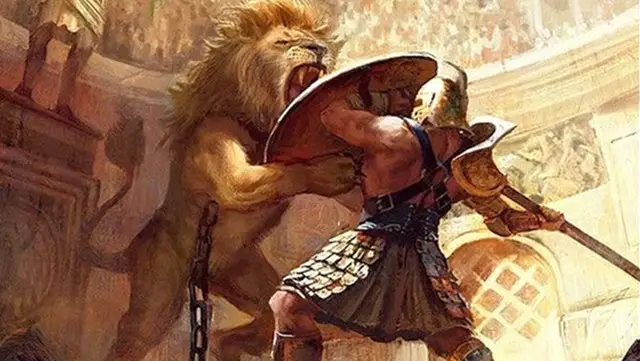
Carpophorus was one of the gladiators belonging to the type – Bestiarii, which meant those who fought against beasts.
He always wished to be a gladiator and fight in the arena. He got a chance to participate in the fight after jumping into the arena and defeating a bear with a flaming straw.
He then specialized in the battle against wild animals and fought against numerous animals, from bears to lions.
He is believed to have bested a bear, a lion, a leopard, a buffalo, panthers, and a boar in the arena. He was able to defeat around 20 animals on one occasion held in Colosseum.
Besides this, he has also defeated a rhino with a single spear. He is considered better at fighting against animals rather than with his fellow gladiators.
His powers were compared to the powers of the divine missions of Hercules for being the strongest fighter in the arena.
9.Gannicus
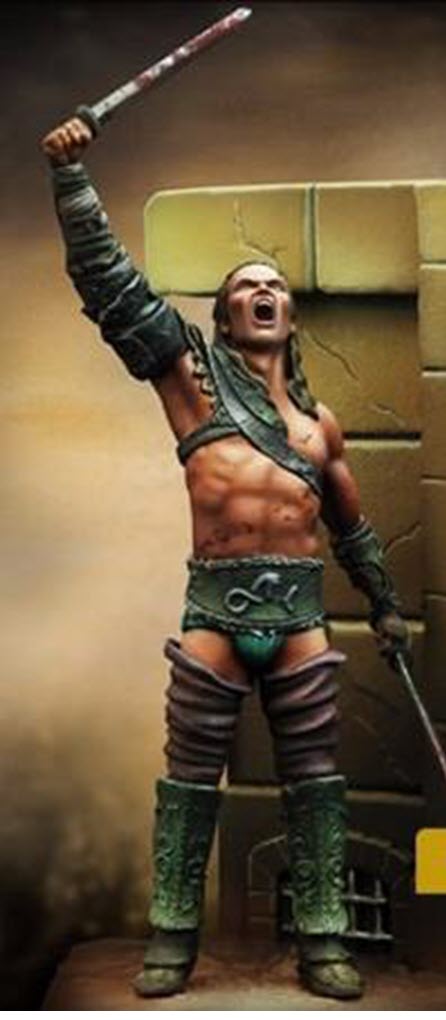
Source: Wikimedia Common
Gannicus is one of the most skilled, durable, and athletic fighters of the ancient Roman period.
He could be compared to the best gladiators such as Spartacus and Crixcus due to his fighting powers and techniques.
During the Third Servile War between the years 73 and 71 BC, he was chosen as one of the many leaders for the rebel slaves.
He was a Celtic gladiator, and for being so, he thrived on athleticism and a level of speed that would enable him to strike rapid and aerial assault as well as quick jumping motions.
His fellow gladiators preferred grounded combat styles which are very different from what he preferred.
Besides fighting preference, he had a unique appearance with tanned skin, long and messy blonde hair.
He also had tattoos on his body, and one of the most famous ones was a Nordic symbol that represented invincibility.
8.Spiculus

Source: Wikimedia Common
Spiculus was the most famous gladiator for being favored by renowned Emperor Nero. He lived during the 1st Century AD in Rome.
Apart from being a skilled and robust gladiator, he was a loyal person. He was able to impress notorious Roman Emperor Nero.
When Emperor Nero was about to be overthrown, every praetorian, his guardsmen, and his close ones betrayed him.
However, Spiculus was supportive and loyal towards him. Being impressed with his loyalty, Nero awarded him with freedom.
In addition to this, Spiculus was also announced as a high-ranked Roman citizen. He also was given riches, palaces, and slaves for his assistance.
Apart from the awards and rewards, Emperor Nero wanted to die at the hands of Spiculus. Unfortunately, during the conflict, Spiculus was not around, so he killed himself.
7.Marcus Attilius

Source: Wikimedia Common
Marcus was a free-born Roman who voluntarily turned into gladiatorial combat.
He did so to pay off his debt and started his fighting career as a rookie.
Though he was just a rookie, he was brought to fight against a few skilled and defending champions. His opponents not only were skilled but had already bagged more than ten victories in the arena.
Despite his opponents’ skill and experience, he was able to defeat all those defending champions. Out of many gladiators he defeated, one was gladiator Hilarus, who was supported by Emperor Nero.
He was also able to gain victory over Raecius Felix, who had won about 12 fights in a row.
The entire series brought Marcus to fight against gladiators who were senior to him was based on skill and experience.
This created a new and unknown phenomenon that went against the fights between the two equal parties.
Marcus is identified with a unique depiction that shows him as a murmillo equipped with a gladius and long shield, and short shin protectors around his legs.
6.Commodus
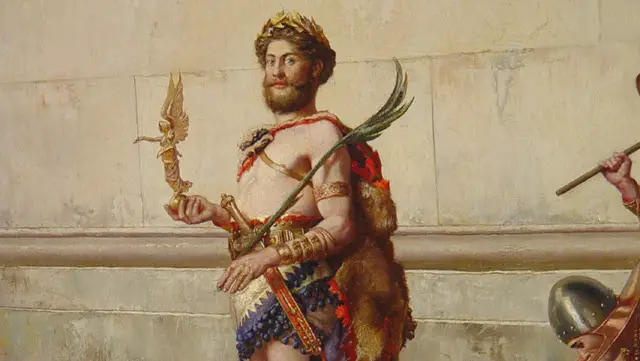
Commodus, the emperor of Rome, was an infamous but enthusiastic person who always dreamt of performing as a gladiator in an arena.
He was egoistic and considered himself superior to everyone before he became known for his skills and techniques in the arena.
To fulfill his interest in fighting as a gladiator, he created an arena in his palace and practiced and fought as a gladiator in private.
However, later he entered the public arena and fought against the real gladiator. Whereas other gladiators had wooden swords, and they got severely hurt with his swords.
He even hurt or sometimes killed animals to prove his skill. Due to this, the Romans considered his gladiatorial combat disgraceful and scandalous.
He had unknowingly gathered numerous enemies during this career in the area. And, was assassinated in 192 AD though not in the arena but strangled by a wrestler named Narcissus in his bath.
5.Tetraites
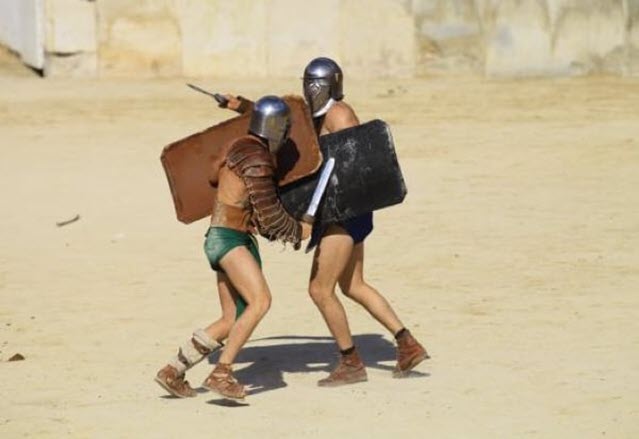
Tetraites was a famous and skilled gladiator. He was mainly known for his murmillones technique of fights.
He was able to gain his fame after defeating Prudes as both of them were considered equally valued gladiators.
This fight left quite an impact as their names were carved on glass vessels found in numerous countries, including present-day France, Hungary, and England.
The carving mentioned the victory of Tetraites over Prudes. In addition to this, he was also famous for his sheer strength, which dwarfed his opponents in every fight he fought in the arena.
However, his fame came into existence after discovering the pottery and the graffiti found in Pompei, which is dated back to 1817. The pottery had the victory against Prudes carved in it.
He had his unique style of entering the arena, where he entered bare-chested, wielding his sword with a shield and wearing a helmet.
Besides these, he also had arm guards and shin guards, and his shield was rectangular shaped.
He is identified in his depiction as a strong man wearing a helmet, a rectangular shield in one hand, and a sword in another.
4.Priscus and Verus
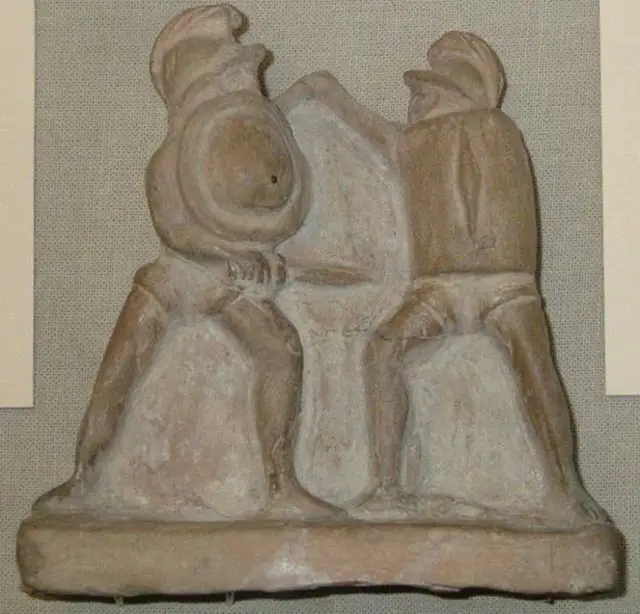
Priscus was a Roman gladiator belonging to the Celtic origin. He was a skilled and strong gladiator. Venus was also one of the most influential gladiators of the ancient Roman period.
Both of them became renowned after the fight amongst each other, where they ended up putting down swords simultaneously to honor each other’s mettle and skill.
The battle, which is considered the most famous in the history of ancient Rome, was fought during the 1st century AD in the Flavian Flavian arena.
Their act impressed and moved Emperor Titus. They were being impressed awarded both the gladiators with the Rudis, which granted them the freedom to gladiators after their retirement.
Emperor Titus was the sponsor of the opening games, which inaugurated the Flavian Amphitheatre in 80 AD.
Since that fight, their names are taken together as one though they are two different gladiators.
The whole act is mentioned in the well-known poem by Martial, where he expresses his praise and commendation of all the renowned gladiators.
3.Flamma

Source: Wikimedia Common
Flamma was initially a Syrian soldier who was captured and forced to become a gladiator. His real name was Marcus Calpunius and was renamed Flamma – meaning Flame after he became the gladiator.
He became a Secutor, a class of gladiator originated around 50 AD. And, he employed armor, a heavy shield, and a sword known as Gladius.
With training and experience, he became one of the strongest gladiators. He was able to win a total of 21 battles throughout his fighting career.
Besides those, he had a total of 9 draws and four losses. And, he was the hero in the First Punic War.
He was also awarded a Rudis more than four times. He continued to fight in the arena despite receiving the freedom award and died at the age of 30 during his final fight.
2.Crixus
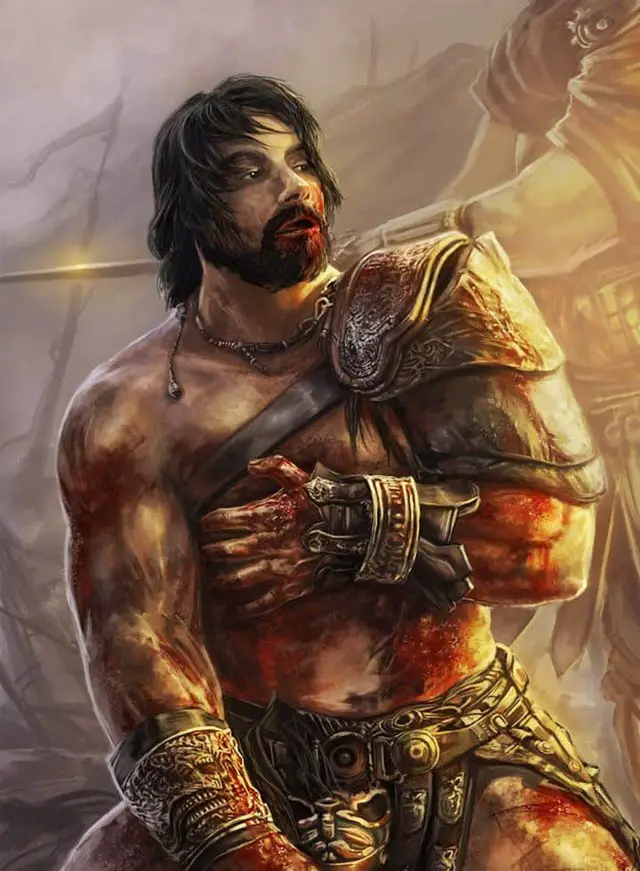
Source: Wikimedia Common
Crixus is a fierce and revered Gallic gladiator. His name meant a person with curly hair.
He had a mind like that of military personnel and a famous military leader at the time of the 3rd Servile War.
He was mainly seen standing near or beside the renowned Roman gladiator Spartacus as his second in command.
He was at the gladiatorial training school in Capua, together with Spartacus, before he came to fight in the arena. The name of the training school was Lentulus Batiatus.
The gladiators, including Crixus, Spartacus, and 70 more, escaped the training school as they hated their trainer.
The escapees’ formed a group, but Crixus did not join that group but wanted to be a part of upper-class Roman society.
He separated himself from Spartacus towards the end of 73 BC. This led to two major groups, one led by Crixus and the other by Spartacus.
Crixus, along with his force, had planned to destroy the Romans. But, unfortunately, the plan could not be executed as the Romans knew about the plan.
This led to a conflict between the Roman army and the force of Crixus, where he was killed by the Romans.
Knowing about Crixus’ death, Spartacus and his forces mocked gladiatorial games and captured about 400 Roman soldiers, and fought till the end. They did so out of respect toward Crixus, despite their separation.
1. Spartacus
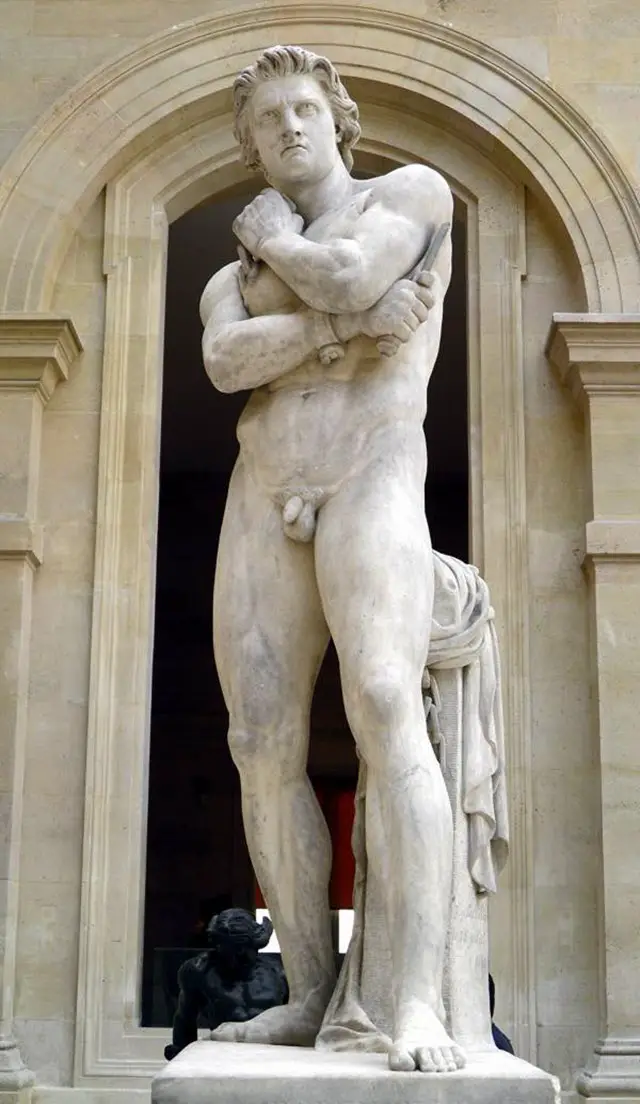
Source: Wikimedia Common
Spartacus was born in c. 111 BC near Strymon river, present-day Bulgaria. He was a Thracian soldier of Old Bulgaria before he became a gladiator.
He was sold from a soldier as a slave to become a gladiator and went to the same gladiator training school as Crixus, which was in Capua.
But, as they hated their trainer, he, Crixus, and about 70 others fled from the school. They formed a group that did not include Crixus.
After they fled, the Senator of Rome sent about 10,000 soldiers to capture Spartacus and his forces but could not.
He started his career as a gladiator in 73 BC and served as a gladiator until 71 BC. He also fought in the Third Servile War.
In 71 BC, Marcus Licinius Crassus came with about 50,000 men, and Spartaculus could not stand against the Roman army.
He was killed in Southern Italy in 71 BC at the age of 39-40 years. At the same time, around 6000 of his followers were captured and crucified during that time.
Conclusion:
The Roman gladiators not only fought in the arena but also left a positive impact on future generations to be brave and strong.
Most of the gladiators were forced to fight in the arena, some being captured while some being their slaves. Some people participating in the arena were not even the gladiators but were forced to fight for the Roman Religious beliefs.
They all managed to entertain the audience and also impress the Emperors of that time. Most of the gladiators were awarded freedom and some with riches.

It’s totally distasteful watching The #God of the #Arena on shity #9 no.
They do know that the picture of Flamma is the For Honor gladiator, right?
Since when did Spartacus ever have a career as a gladiator? The whole point of his escape was because he didn’t want to fight and he was sold to the training school as punishment for desertion and banditry, so becoming a named hero in the arena was not going to be the point – and further, his confinement at the barracks was before the era of star gladiators anyway. In his day, slaves were plentiful and cheap. Certainly Batiatus didn’t consider Spartacus a threat, he was warned there might be an escape and did nothing about it.